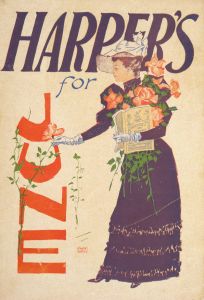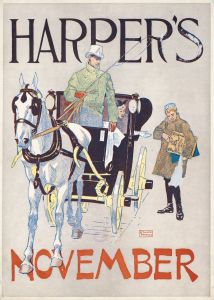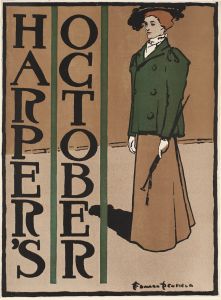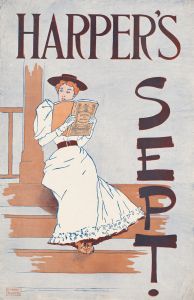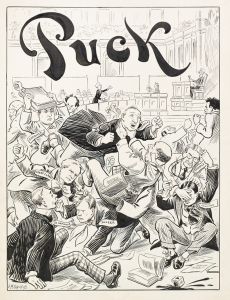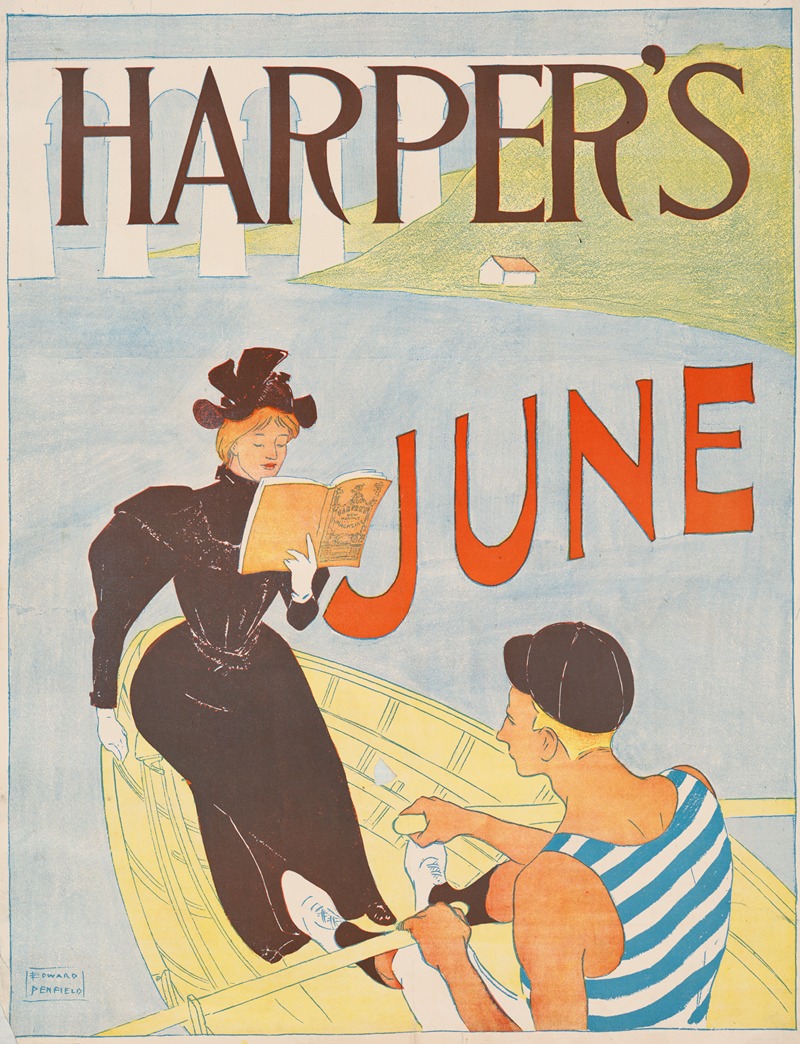
Harper’s June
A hand-painted replica of Edward Penfield’s masterpiece Harper’s June, meticulously crafted by professional artists to capture the true essence of the original. Each piece is created with museum-quality canvas and rare mineral pigments, carefully painted by experienced artists with delicate brushstrokes and rich, layered colors to perfectly recreate the texture of the original artwork. Unlike machine-printed reproductions, this hand-painted version brings the painting to life, infused with the artist’s emotions and skill in every stroke. Whether for personal collection or home decoration, it instantly elevates the artistic atmosphere of any space.
Edward Penfield was an influential American illustrator and a key figure in the development of graphic design during the late 19th and early 20th centuries. He is best known for his work as an art director for Harper's Magazine, where he created a series of monthly posters that are now considered iconic examples of American poster art. One of his notable works is "Harper’s June," which exemplifies his distinctive style and contribution to the art world.
"Harper’s June" was created as part of Penfield's series of posters for Harper's Magazine, which he began producing in the 1890s. These posters were designed to promote the magazine and were distributed as collectible art pieces. Penfield's work during this period is characterized by its bold use of color, simplified forms, and clear, concise compositions that effectively communicated the essence of the magazine's content.
In "Harper’s June," Penfield employs a style that reflects the Art Nouveau movement, which was popular at the time. The poster features a fashionable woman dressed in contemporary attire, reading a copy of Harper's Magazine. This image not only serves as an advertisement for the publication but also captures the spirit of the era, highlighting the cultural and social interests of the magazine's readership.
Penfield's approach to design was innovative for its time. He utilized flat areas of color and strong outlines, which were influenced by Japanese woodblock prints, a common inspiration for many artists of the Art Nouveau period. This technique allowed him to create visually striking images that were easily recognizable and memorable. His posters often featured elegant, well-dressed figures engaged in leisurely activities, which appealed to the magazine's target audience and conveyed a sense of sophistication and modernity.
The impact of Penfield's work on the field of graphic design cannot be overstated. His posters for Harper's Magazine helped to elevate the status of commercial art, demonstrating that advertising could be both functional and aesthetically pleasing. Penfield's ability to blend art and commerce set a precedent for future generations of graphic designers and illustrators.
"Harper’s June" and other posters by Penfield are now highly regarded by collectors and historians alike. They are seen as important artifacts of American visual culture, reflecting the tastes and trends of the late 19th and early 20th centuries. Penfield's work continues to be studied and admired for its artistic merit and its role in shaping the field of graphic design.
In summary, Edward Penfield's "Harper’s June" is a significant work that exemplifies his contribution to the world of illustration and graphic design. Through his innovative use of color, form, and composition, Penfield created a lasting legacy that continues to influence artists and designers today.





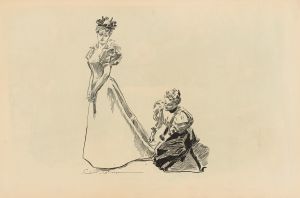
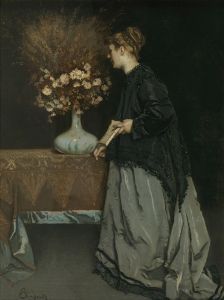
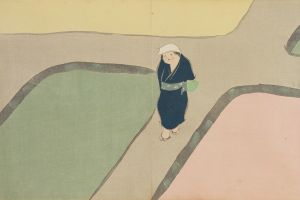
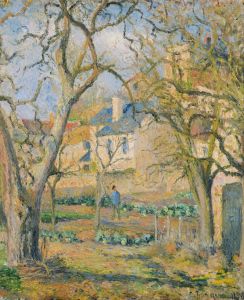
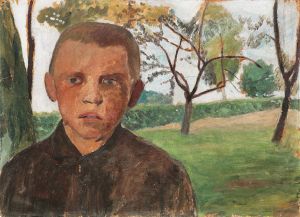
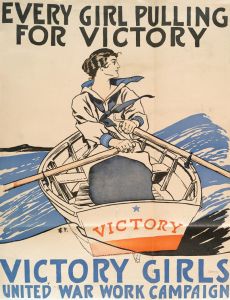
![Harper’s [for] April](/imgs/252615/s/edward-penfield-harpers-for-april-926050d0.jpg)
![Harper’s [for] August](/imgs/252617/s/edward-penfield-harpers-for-august-e6d45621.jpg)
